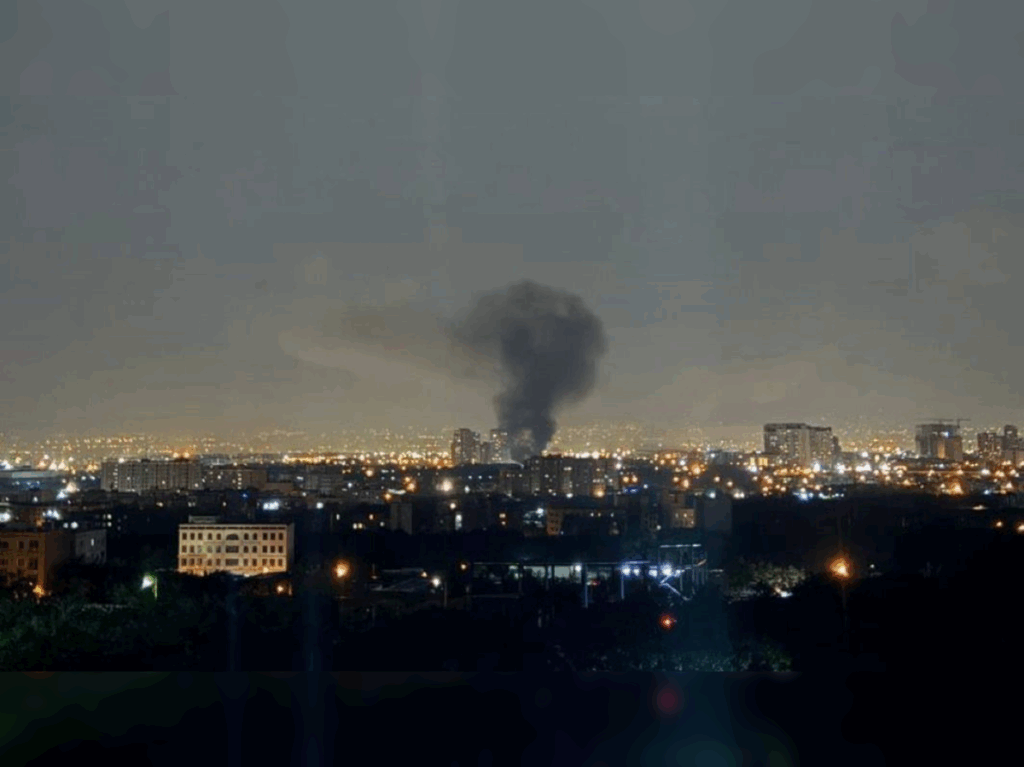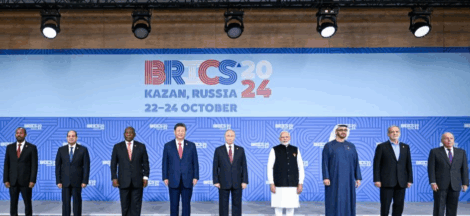By Asad Mirza
Iran and Israel continued their military strikes against each other for a fourth straight day (June 16). Last night, Iran targetted the northern Israeli port city of Haifa. As Israel’s defence system intercepted Iran’s ballistic missiles, two hypersonic missiles reportedly hit Haifa, causing several injuries, according to Israel’s public broadcaster Kan. However, during these ongoing attacks and counter attacks, the moot question is where Iran faltered in securing the security and defence structure of its nuclear and military installations.
On June 13, the Islamic Republic of Iran experienced a strategic collapse that altered the balance of power in the Middle East. Israel eliminated key Iranian military and scientific personnel, degraded the country’s missile infrastructure, and neutralised its early-warning systems. But more consequentially, Israel’s strike – dubbed Operation Rising Lion – shattered the Iranian regime’s confidence in its own security apparatus.
An analysis by Zaineb Riduoa for the Washington-based Hudson Institute says that reportedly, Israel prepared for the operation over years of sustained intelligence preparation, real-time intelligence, surveillance, and reconnaissance (ISR), and deep infiltration. Israeli military planners achieved full-spectrum disruption by dismantling and infiltrating Iran’s command and control networks, severing high-level communications, and injecting uncertainty into the regime’s decision-making processes.
By the time Tehran could react, the damage was already done. Its upper command was wiped out, and its defensive systems were disabled. Crucially, Israel did not rely on cross-border operations. It had pre-positioned remote-activated strike platforms inside Iran and deployed them with surgical precision. This shows its preparations and depth of its infiltration of the Iranian security apparatus.
Israel combined a decapitation strike with cognitive disruption. The psychological warfare element – that the strike had come from Iranian soil – amplified the attack’s kinetic effects, leaving Tehran paralysed. Unable to determine whether it had been infiltrated or outmanoeuvred, the regime’s ability to respond took time to recover and initiate countermeasures.
For Iran, the first two warnings came in July 2024 and September 2024. In July, Israel assassinated Ismail Haniyeh – Hamas’s top political official and a guest of the Islamic Republic – in the heart of Tehran, demonstrating its ability to penetrate Iran’s capital, bypass multiple layers of security, and execute a precision strike without visible attribution.
The second warning followed in September, when Israel conducted a sophisticated attack using explosive pagers against Hezbollah operatives in Lebanon, killing dozens and injuring thousands. This showcased its capacity to infiltrate and disrupt enemy networks. These operations sent a strategic message and served as rehearsals for something much larger.
However, Tehran failed to grasp the significance. The regime dismissed the assassinations as internal sabotage or factional violence, refusing to entertain the possibility that a hostile state actor had executed the operation within its own territory. That misjudgement exposed a structural flaw in the Iranian regime: Tehran’s national security establishment could no longer detect or interpret threats emerging from its core.
Iran’s failure to anticipate Operation Rising Lion demonstrates a series of strategic miscalculations rooted in flawed assumptions about Israel, the United States, and the nature of contemporary conflict.
Firstly, Iran interpreted American criticism of Israel’s Gaza operations as a sign of strategic divergence. Believing Netanyahu’s government was isolated, Tehran likely calculated that Washington would block or dissuade a major Israeli escalation. It misjudged both the depth of US-Israel coordination and the capability of Israel’s forces.
Secondly, in the aftermath of October 7, Iran assumed that Israel’s intelligence services were overstretched and more focused on domestic issues. Tehran discounted the idea that Israel could conduct a complex, multidomain operation deep inside Iranian.
Thirdly, rather than recognising that these assassinations were part of a broader Israeli strategy of infiltration and pre-emption, Iran treated them as isolated cases. It failed to see operations such as the decapitation of Hezbollah’s military elite as the opening moves of an evolving campaign.
Fourthly, Tehran viewed President Trump’s 60-day ultimatum as a political signal, not a real deadline. Believing it had room to manoeuvre, Iran continued enrichment. Israel struck on day 61.
Fifthly, when the Trump administration resumed nuclear negotiations, Iran mistook engagement for concession. Iranian officials believed Washington’s return to talks signalled weakness and assumed they could extract sanctions relief without making meaningful concessions on uranium enrichment.
Sixthly, the collapse of Bashar al-Assad’s regime – triggered by Israeli strikes and internal defections – shattered Iran’s assumptions about stability and escalation management.
Further, Iran also misread the Chinese support. Iranian officials interpreted Chinese backing as an effective shield from geopolitical consequences. As nuclear negotiations resumed in 2025, Chinese diplomats publicly reaffirmed the 25-year China-Iran pact and emphasised multipolarity, integration into BRICS, and cooperation with Russia. Tehran viewed this not only as validation of its international alignment but as evidence that it could defy US and Israeli pressure without consequences.
Iran was further emboldened by its belief that the China-brokered normalisation deal it signed with Saudi Arabia in early 2023 had silenced the most vocal regional opponent of Iran’s nuclear ambitions.
Tehran assumed Riyadh’s opposition to its nuclear program had been politically neutralised and that, with Saudi Arabia out of the equation, Washington would have less incentive to support Israeli pre-emptive strikes. This was a fundamental miscalculation. The Riyadh-Tehran normalisation produced optics, not a strategic shift.
Additionally, Israel launched Operation Rising Lion’s based on its mastery of deception and psychological warfare. Deception in modern warfare involves crafting false narratives to mislead adversaries and inducing them to misjudge intentions, capabilities, or timing. Israel’s campaign was a textbook example, paralysing Iran’s decision-making through a carefully orchestrated web of misdirection.
In the weeks preceding the strike, Israel saturated global media, diplomatic channels, and public discourse with false cues designed to lull Tehran into complacency.
The Israeli security cabinet meeting that green-lit the operation was disguised as a routine discussion on Gaza hostage negotiations. Ministers were briefed only within a secure forum, signing stringent nondisclosure agreements known as shomer sod, or “guardian of the secret.” Even senior government officials believed no major action was imminent, writes Riboua.
Further, Netanyahu’s office leaked a story that he was attending his son Avner Netanyahu’s wedding in Galilee. The illusion that Israel’s leader was preoccupied with personal matters reinforced Iran’s complacency.
Mossad Director David Barnea and envoy Ron Dermer claimed to be on a trip to Washington via Oman for a “sixth round” of nuclear talks. These negotiations were fictitious, but their announcement suggested diplomatic progress, diverting attention from military preparations.
Netanyahu’s team allowed rumours of a rift with Trump over a potential Iran strike to circulate in the media, fostering perceptions of political disunity within Israel’s leadership.
Israel designed this cognitive warfare campaign to neutralise Iran’s command and control structure before kinetic operations began. For Israel, deception is a central force multiplier in operational planning. Against a highly centralised, ideologically rigid, and hierarchical regime like Iran, disrupting perception at the leadership level produces disproportionate strategic effects, says Riduoa.
Operation Rising Lion demonstrated how modern warfare is shaped by perception, disruption, and initiative. Israel dismantled core elements of Iran’s command structure, eliminated key personnel tied to nuclear development, and exposed the gaps in Iran’s internal defences. More critically, it disrupted the strategic logic that underpins Iran’s regional posture. Tehran had assumed that escalation could be delayed, that its territorial depth provided insulation, and that Israel would remain constrained by political and diplomatic pressures. On June 13 those assumptions collapsed. (IPA Service)




 Massive Protest Rallies Against Trump Overshadow His Birthday And Army Day Festivities
Massive Protest Rallies Against Trump Overshadow His Birthday And Army Day Festivities 